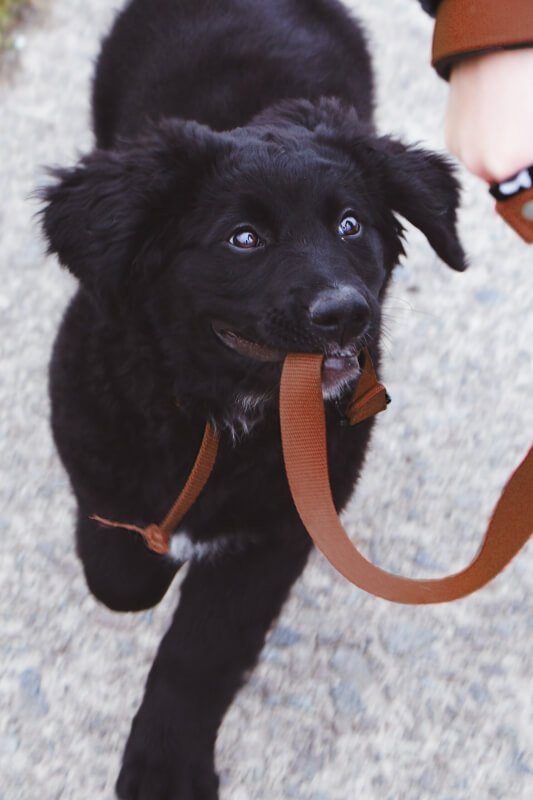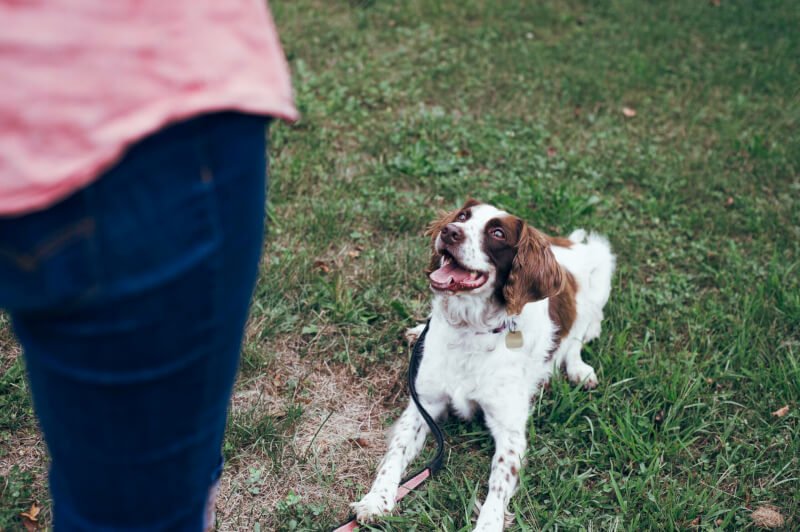If you’re a dog owner struggling with behavioral issues, you’ll be delighted to know that help is just around the corner. With “Dog Training Behavior Problems Near Me,” you can find professional dog trainers who specialize in addressing and resolving those challenging behavioral issues your furry friend may be experiencing. From excessive barking to separation anxiety, this comprehensive guide will connect you with the nearest experts who possess the knowledge and skills to transform your dog’s behavior and enhance your bond. Say goodbye to frustration and hello to a well-behaved and happy canine companion.

Understanding Dog Training Behavior Problems
Owning a dog has many joys and benefits, but sometimes our furry friends can exhibit behavior problems that can be frustrating and challenging to deal with. Understanding these behavior problems is the first step towards addressing them effectively. By gaining insight into why dogs exhibit certain behaviors and how to approach training, you can create a happier and more well-behaved dog.
Ready for Cat Trivia?
Test your knowledge about cats!

Common dog behavior problems
There are several common behavior problems that dog owners often encounter. Some of these include aggression, separation anxiety, excessive barking, chewing and destructive behavior, jumping on people, pulling on the leash, housebreaking and potty training issues, fear and phobias, compulsive behaviors, and resource guarding. Each of these behaviors can vary in severity and may require different training techniques to address effectively.
Causes of dog behavior problems
Dog behavior problems can have a variety of causes. They can stem from a lack of socialization during the early stages of a dog’s life, traumatic experiences, genetic predispositions, or ineffective training methods. Additionally, environmental factors, such as changes in routine or living arrangements, can also contribute to behavior issues in dogs. It is important to identify the root cause of the behavior problem in order to implement the most appropriate training techniques.
The importance of addressing behavior problems
Addressing behavior problems in dogs is crucial for several reasons. Firstly, these behavior problems can impact the overall well-being and quality of life of both the dog and its owner. A dog that exhibits frequent aggression or anxiety can cause stress and frustration for its owner, and may even pose a risk to other pets or individuals. Secondly, behavior problems can worsen over time if left untreated, making them harder to correct in the future. Lastly, by addressing behavior problems, you can create a strong bond of trust and understanding between you and your dog, leading to a harmonious and enjoyable companionship.
Benefits of Professional Dog Training
While some dog owners may choose to tackle behavior problems on their own, there are numerous advantages to enlisting the help of a professional dog trainer. A professional trainer possesses the knowledge, skills, and experience to effectively address a wide range of behavior problems, ensuring a more efficient and successful training process.
Advantages of hiring a professional trainer
One of the greatest advantages of hiring a professional dog trainer is their expertise in understanding dog behavior. They can accurately assess the underlying cause of behavior problems and implement appropriate training techniques. A professional trainer can tailor their approach to suit the specific needs and temperament of your dog, increasing the chances of positive results. Additionally, they provide you with the necessary guidance and support throughout the training process, ensuring that you are equipped with the skills to maintain the desired behaviors long-term.
Finding reputable dog trainers near me
When searching for a reputable dog trainer in your area, there are several factors to consider. Start by asking for recommendations from friends, family, or your veterinarian. You can also consult online directories or check with local pet stores or animal shelters for referrals. It is important to research potential trainers thoroughly, considering their qualifications, certifications, and experience. Reading reviews or testimonials from previous clients can also give you an idea of their effectiveness and professionalism.
Questions to ask when choosing a trainer
To ensure that a dog trainer is the right fit for you and your dog, there are a few key questions to ask during the initial consultation. Inquire about their training methods and philosophy to ensure they align with your own beliefs and goals. Ask about their experience in dealing with behavior problems similar to your dog’s, as well as their success rate. It is also important to discuss their approach to positive reinforcement and the use of punishment. Lastly, inquire about their availability, pricing, and any guarantees they may offer.
Specific Training Programs for Behavior Problems
When it comes to addressing specific behavior problems, there are various training programs available that can effectively target and modify these behaviors.
Aggression and dominance
Aggression and dominance are common behavior problems in dogs, and they can manifest in various ways, such as growling, snapping, or biting. Training programs for aggression and dominance focus on teaching the dog alternative, more appropriate behaviors while establishing clear boundaries and consistent leadership from the owner.
Separation anxiety
Separation anxiety is a condition in which dogs experience distress and anxiety when left alone. Training programs for separation anxiety aim to gradually desensitize the dog to being alone, using techniques such as counterconditioning and positive reinforcement. These programs also focus on providing mental stimulation and interactive toys to keep the dog occupied during periods of separation.
Excessive barking
Excessive barking can be a nuisance for both dog owners and their neighbors. Training programs for excessive barking focus on teaching the dog the “quiet” command, rewarding periods of silence, and using distraction and redirection techniques to redirect their attention away from barking triggers.
Chewing and destructive behavior
Chewing and destructive behavior can be caused by boredom, anxiety, or teething. Training programs for chewing and destructive behavior aim to provide appropriate chew toys, discourage and redirect chewing behavior to acceptable items, and implement strategies such as crate training and supervision to prevent destructive behavior.
Jumping on people
Jumping on people is a common behavior problem, especially in young or excitable dogs. Training programs for jumping behavior focus on teaching alternative greeting behaviors, such as sitting or offering a paw, rewarding calm and controlled behavior, and consistently enforcing these behaviors with all members of the family.
Pulling on the leash
Leash pulling can make walks unpleasant and difficult to enjoy. Training programs for leash pulling aim to teach the dog loose leash walking techniques, rewarding walking beside the owner without pulling, and using positive reinforcement to encourage the desired behavior while discouraging pulling through techniques like stopping or changing direction when the dog pulls.
Housebreaking and potty training
Housebreaking and potty training are essential for a harmonious living environment. Training programs for housebreaking and potty training focus on establishing a consistent routine, rewarding desired elimination behavior, using confinement strategies like crate training, and gradually expanding the dog’s access to the house as they learn appropriate habits.
Fear and phobias
Fear and phobias can greatly affect a dog’s quality of life and overall well-being. Training programs for fear and phobias aim to desensitize the dog to their fears through gradual exposure, using positive reinforcement to create positive associations, and implementing techniques such as counterconditioning and gentle handling to build their confidence.
Compulsive behaviors
Compulsive behaviors, such as excessive licking or tail chasing, can be distressing for both the dog and their owner. Training programs for compulsive behaviors focus on providing mental and physical stimulation, redirecting the dog’s behavior onto more appropriate activities, and using positive reinforcement to reward calm and relaxed behavior.
Resource guarding
Resource guarding is when a dog displays aggressive behavior to protect their possessions, such as food, toys, or people. Training programs for resource guarding focus on desensitizing the dog to the presence of people or other animals near their possessions, teaching them to relinquish items on command, and implementing a consistent and structured routine for feeding and managing valuable resources.
Positive Reinforcement Training Techniques
Positive reinforcement is a training technique that involves rewarding desired behaviors, rather than punishing or correcting unwanted behaviors. This approach encourages dogs to repeat the behaviors that result in positive outcomes, creating a strong bond and promoting a willing and enthusiastic attitude towards training.
Overview of positive reinforcement
Positive reinforcement works by rewarding your dog with something they value immediately after they exhibit the desired behavior. This can be done using treats, praise, or play. The reward should be delivered promptly and consistently to reinforce the association between the behavior and the reward.
Using treats and rewards effectively
Treats can be an effective tool for positive reinforcement training, as most dogs are motivated by food. When using treats, it is important to choose high-value rewards that your dog finds particularly enticing. Additionally, treats should be used in moderation to prevent overfeeding and to ensure that they retain their value as a reward.
Clicker training: How it works
Clicker training is a specific form of positive reinforcement training that uses a clicker, a small handheld device that makes a distinct clicking sound, to mark the exact moment when the dog exhibits the desired behavior. The clicker serves as a signal that the dog has done something correctly and will be rewarded. Over time, the clicker becomes a conditioned reinforcer, signaling the dog that a reward is imminent.
Creating a positive training environment
Creating a positive training environment is essential for successful positive reinforcement training. This includes setting aside dedicated training sessions that are free from distractions, using clear and consistent cues and commands, and maintaining a calm and patient demeanor. It is important to be mindful of your own body language and tone of voice, as dogs are highly attuned to human emotions.

Addressing Separation Anxiety
Separation anxiety is a common behavior problem that many dogs experience when their owners leave them alone. Understanding and addressing separation anxiety is crucial for improving your dog’s well-being and ensuring a peaceful home environment.
Identifying separation anxiety in dogs
Separation anxiety can manifest in various ways, including excessive barking or howling, destructive behavior, and inappropriate elimination. Dogs with separation anxiety may become visibly anxious or distressed when their owner prepares to leave or exhibit excessive excitement upon their return. It is important to rule out any underlying medical conditions that may be contributing to these behaviors.
Tips for reducing separation anxiety
Reducing separation anxiety requires a systematic approach and patience. Gradual desensitization techniques can be used to help the dog become more comfortable with being alone. Start by leaving the dog alone for short periods of time, gradually increasing the duration as they become more accustomed to being alone. This process should be done in a calm and supportive manner, ensuring that the dog feels safe and secure throughout.
Gradual desensitization techniques
Gradual desensitization involves exposing the dog to short periods of being alone and gradually increasing the time spent alone. This can be done in conjunction with counterconditioning, which involves pairing being alone with positive experiences such as treats or toys. The goal is to create a positive association with being alone, helping the dog become more comfortable and less anxious.
Interactive toys and puzzles
Interactive toys and puzzles can provide mental stimulation and help alleviate separation anxiety. These toys engage the dog’s mind and can provide a distraction from their anxiety or boredom. Toys that dispense treats or require problem-solving can keep the dog occupied and entertained during periods of separation.
Dealing with Aggression and Dominance
Aggression and dominance are behavior problems that require careful handling and a structured approach. By understanding these behaviors and implementing effective training techniques, you can help your dog become more well-mannered and less prone to aggressive or dominant displays.
Recognizing aggressive behaviors
Recognizing aggressive behaviors is crucial in addressing aggression and dominance. These behaviors can include growling, showing teeth, lunging, or biting. It is important to understand that aggressive behaviors are often a result of fear or anxiety and should not be dismissed lightly. Identifying and addressing the underlying cause of aggression is essential in creating long-term behavior change.
Establishing yourself as the pack leader
Establishing yourself as the pack leader is essential in addressing aggression and dominance. Dogs are instinctively inclined to follow a leader, and when this role is not clearly defined, they may feel the need to assume the position themselves. By consistently enforcing rules, setting boundaries, and providing clear leadership, you can help your dog feel secure and less inclined to display aggressive or dominant behaviors.
Positive reinforcement for correct behavior
Positive reinforcement plays a vital role in addressing aggression and dominance. By rewarding your dog for displaying calm and respectful behaviors, you are reinforcing their understanding of desired behaviors. This can include rewarding your dog for sitting or staying in a calm and controlled manner when encountering potentially triggering situations.
Behavior modification techniques
Behavior modification techniques, such as desensitization and counterconditioning, can be highly effective in addressing aggression and dominance. This involves exposing your dog to the triggering stimuli in a controlled and gradual manner, paired with positive experiences that help to change their emotional response. Working with a professional trainer can be particularly helpful in implementing these techniques safely and effectively.

Techniques to Control Excessive Barking
Excessive barking can be a source of frustration for dog owners and a disturbance to neighbors. By understanding the reasons behind barking and implementing effective training techniques, you can help control and minimize excessive barking in your dog.
Understanding the reasons behind barking
Barking is a natural means of communication for dogs, but excessive barking often indicates an underlying issue. Some common reasons for excessive barking include boredom, alerting to perceived threats, seeking attention, fear or anxiety, or frustration. By identifying the root cause of your dog’s barking, you can tailor your training approach to address the specific issue.
Teaching the ‘quiet’ command
Teaching the “quiet” command is a valuable tool in controlling excessive barking. Start by teaching your dog the cue word “quiet” or “enough” in a calm and controlled environment, and then gradually introduce distractions or triggers that typically prompt barking. When your dog stops barking on command, reward them with praise and treats. Consistency and patience are key in reinforcing this command.
Distraction and redirection methods
Distraction and redirection methods can help redirect your dog’s attention away from barking triggers. This can involve using toys, treats, or games to engage your dog and divert their focus from the stimulus that prompts barking. It is important to reinforce and reward their calm and quiet behavior when they are successfully redirected.
Consistency in training and correction
Consistency is crucial in addressing excessive barking. It is important to establish clear rules and expectations for your dog and consistently enforce them. This can involve avoiding unintentional reinforcement of barking, such as giving attention or treats when your dog barks. Additionally, it is important to correct barking behavior calmly and consistently, using the “quiet” command or redirecting their attention.
Preventing Destructive Chewing Behavior
Destructive chewing behavior can be frustrating and costly for dog owners. Understanding the causes of chewing and implementing effective strategies can help redirect this behavior onto more appropriate items.
Exploring the causes of chewing
Chewing is a natural behavior for dogs and serves several purposes, including teething, exploration, or easing anxiety or boredom. Understanding the cause of your dog’s destructive chewing is important in addressing the behavior effectively. Providing appropriate outlets for chewing and addressing any underlying anxiety or boredom can help prevent destructive chewing.
Providing appropriate chew toys
Providing appropriate chew toys is essential in redirecting your dog’s chewing behavior. Choose toys that are specifically designed for chewing and are durable enough to withstand your dog’s chewing strength. It is important to rotate toys to keep them engaging and to prevent boredom.
Using bitter sprays and deterrents
Bitter sprays and deterrents can be useful in preventing your dog from chewing on inappropriate items. These products are designed to taste unpleasant and discourage your dog from chewing on furniture, shoes, or household items. It is important to use these sprays in conjunction with providing appropriate chew toys to redirect your dog’s chewing behavior.
Supervision and confinement strategies
Supervision and confinement strategies are crucial in preventing destructive chewing behavior. When you cannot directly supervise your dog, confining them to a safe and dog-proofed area, such as a crate or gated room, can prevent them from accessing inappropriate items to chew on. This helps establish good habits and keeps your belongings safe.

Conquering Jumping Behavior
Jumping on people is a common behavior problem, particularly in young or excitable dogs. By teaching your dog alternative greeting behaviors and consistently reinforcing calm behavior, you can address this issue and promote polite interactions with guests or visitors.
Teaching alternative greeting behaviors
Teaching your dog alternative greeting behaviors can redirect their urge to jump. Training them to sit or offer a paw when greeting guests can provide a more controlled and acceptable way for your dog to interact. Consistently rewarding calm and polite behavior during greetings helps reinforce these alternative behaviors.
Ignoring and redirecting jumping
When your dog jumps on you or others, it is important to avoid inadvertently reinforcing this behavior. Instead of giving attention or affection, ignore the jumping and turn away from your dog. Once they have all four paws on the ground, redirect their attention to an alternative behavior, such as sitting, and reward them for this calm behavior.
Training for consistency with all family members
Consistency is key in addressing jumping behavior. It is important to ensure that all family members and visitors are on the same page when it comes to addressing and correcting jumping. Everyone should follow the same training protocols and reinforce the desired alternative behaviors consistently.
Reinforcing calm and controlled behavior
Reinforcing calm and controlled behavior is crucial in addressing jumping. By rewarding and reinforcing your dog’s calm behavior, you can help them understand that being calm and polite leads to positive outcomes. This can be achieved through treats, praise, or play, depending on what motivates your dog.
Conclusion
Understanding and addressing dog training behavior problems is essential for creating a happy and well-behaved dog. By recognizing common behavior problems, identifying their causes, and implementing appropriate training techniques, you can overcome these challenges and establish a strong bond with your furry friend. Whether you choose to work with a professional trainer or tackle the training yourself, consistency, patience, and positive reinforcement are key to achieving long-term behavior change. With time and effort, you can ensure a harmonious living environment and a lifelong companionship with your beloved dog.



